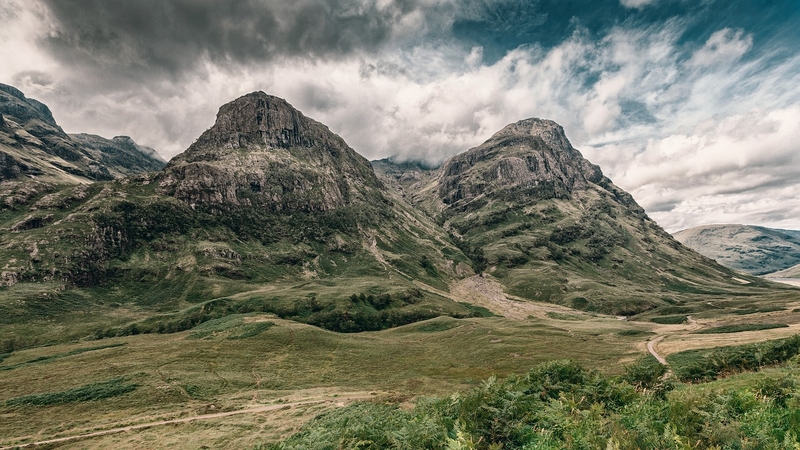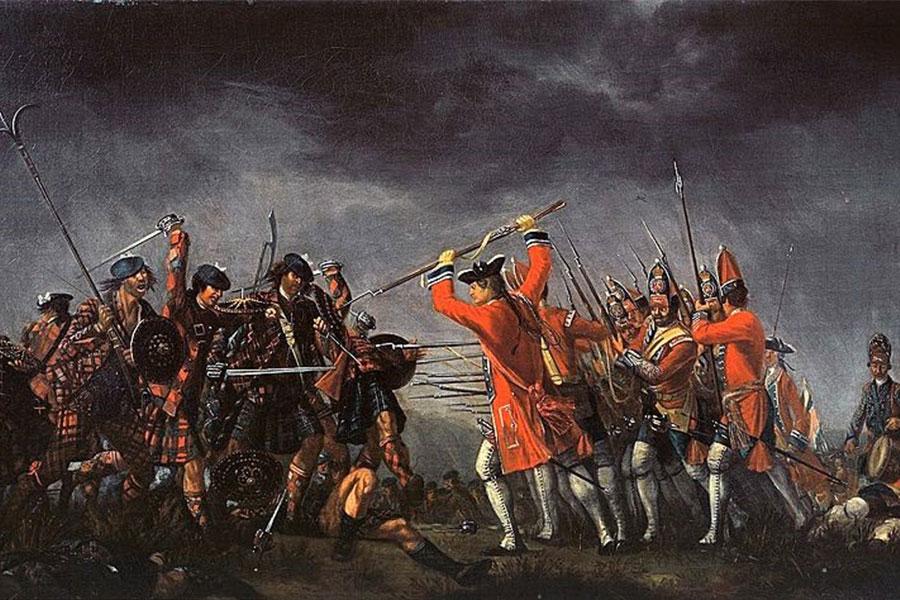Scotland's Bloodiest Clan Battles
Today, Scotland’s clan system conjures up images of tartan-clad warriors running through the Highlands with mist eerily rolling across the plains. Tales of hardy men and women from a simpler time tend to fill people with a sense of longing for the past—whether they’re Scottish or not! At Lochcarron, we understand this nostalgia. It’s one of the reasons we keep the tartan tradition alive.
With the success of our Scottish clan map, we wanted to bring history to life for the second time. Hundreds of years of feuding families have peppered our country with sites of famous and not-so-famous battles.
Definition of a clan
Derived from the Gaelic word ‘clann’, meaning children, the Scottish clan system tied extended family groups together under shared banners and insignia. In Scotland’s expansive, lawless wildernesses, these bonds were crucial for survival.
Tartan came to represent the unshakeable bonds of men. (Read more about the clan system here).
Key Scottish Battles
Our timeline charts the major Scottish battles between the 11th and 18th century. Keep an eye out for the following key moments:

Source: Wikipedia
The Battle of Culloden, 1746.
Arguably the most significant event in Scottish history, Culloden saw Scotland lose to England in the last pitched battle fought on British soil, marking the end of the Jacobite uprising.
The Duke of Cumberland crushed Prince Charle's forces of Highlanders and elite French troops with a force of 8,000 Brtish-Hanoverian soldiers
With widespread murder and pillaging, the battle saw Scots killing fellow Scots, Protestants killing Catholics, and infantrymen killing women and children. The atrocities committed during and after the battle are made all the more shocking by the fact they occurred only 271 years ago. What’s more, they marked the end of an entire way of life for people
The Battle of Altimarlach, 1672.
The last independent battle between clans in Scotland saw the Sinclairs fighting the Campbells over rights to Girnigoe Estates in Caithness.
George Sinclair, having been forced to hand over the estate because of debts, gave his title to Sir John Campbell. When George’s heir, George Sinclair of Keiss, seized back the land, Clan Campbell was forced to march.
Alleged to have been drunk, the defending Sinclair soldiers numbered only 500 and were easily overpowered by the 800 steadier Campbell forces—leaving 300 dead. George Sinclair of Keiss ultimately appealed to the law and his estate was returned to him from Clan Campbell in September of that year.
To mock the Sinclair's habit of wearing tartan trews instead of the traditional Highland dress, the Campbel pipers composed a tune. ("Gaffers in Trousers.")
Fashion was truly a matter of life-and-death in the Highlands.
 Source: LoboStudioHamburg
Source: LoboStudioHamburg
The Battle of Champions, 1478 or 1464
A romance that ended in bloodshed. This Highlands story of love and betrayal ended with an amicable agreement over 500 years later.
Clan Gunn and Clan Keith were always at odds. The Chief of Clan Keith discovered Helen of Braemore was due to marry a Gunn, he abducted her and killed her lover. Distraught, Helen committed suicide by jumping from Ackergill Tower.
This led to an agreed trial by combat between the clans. On the day, the devious Keiths arrived in greater numbers and slaughtered the Gunns. In 1978 that clans reunited to sign a peace treaty.
The clan system was as much about pride as protection. As population numbers grew, it became necessary to allow outsiders in—they would normally adopt the surname out of respect. This dynamic led to strong hierarchies and roles for each clan’s members. Women cooked and cleaned; men farmed and fought.
It’s always moving to think back to the lives lost infamous Scottish clan battles. These battles would go on to define a warrior race, producing beautiful artefacts, buildings and culture.
The Dress Act of 1746 made tartan illegal in Scotland, effectively ending the culture. However, what really mattered was the strength, bravery, and alliances behind these simple patterns. We can keep these memories alive.










